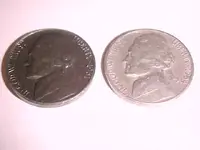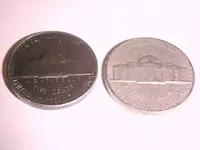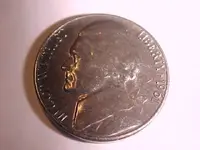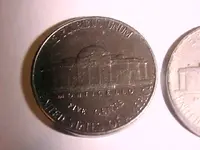Not necessarily oxidation. FYI from another forum. "It seems a number of 1958 and 1959 Jefferson Nickels were struck on planchets that were improperly annealed. The annealing process is where the unstruck planchets are heated before striking. These improperly annealed planchets are assumed to have been inadvertently run through multiple cycles in the annealing oven resulting in a "burnt" look to the coins leaving them with a black color, thus the "Black Beauty" label. The coins generally will show a lot of luster."
The large picture of the obverse appears to have a deep, even looking surface and decent luster. Oxidation would lay more on the surface. I'm not sure if this may have resulted from some of those left over planchets still around in 1961 but I guess it's possible.







